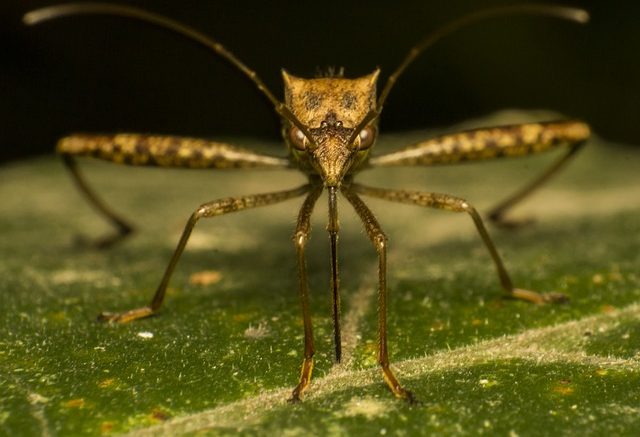We left off in Part 1 learning about this horrific experiment: “I admit I’ll kill a mosquito that tries to bite me, but the scientists arguably tortured these insects.”
——
…mosquitoes were anesthetized on ice, and a leg from each mosquito was removed using sharp forceps and immersed into 20??L of sample dilution buffer supplemented with 0.5??L of DNA release reagent. Leg samples in dilution buffer were incubated for 3…
Mosquitoes were forced to salivate for 30?minutes in glass capillaries.
For their complex sci-fi process, they used African green monkey kidney cells along with mouse monoclonal anti-alphavirus antibodies. The DENV-2 genomic fragment was then inserted into a plasmid and transformed by Escherichia coli.
This GMO mosquito is also funded by DARPA’s Safe Genes Program. And in case you missed my two-part on Substack, they used Plasmid and vats of E.coli to scale up their COVID-19 jibjab and although Pfizer knew there was contamination, they injected humans anyway.
“This Wolbachia mosquito thing is crazy, released them by the millions and millions, now they’re saying the Aedes aegyptii problem is way worse and bringing way more diseases,” A. W. Finnegan, author of The Sleeper Agent: The Rise of Lyme Disease, Chronic Illness, and the Great Imitator Antigens of Biological Warfare.
The process involves crossing Wolbachia-infected A. aegypti females with KO Wolbachia-negative male mosquitoes. Homozygous mutant Wolbachia-infected males and heterozygous Wolbachia-infected females were isolated and further crossed to obtain homozygous Wolbachia-infected male and female mosquitoes. Homozygous mutant Wolbachia-infected male and female mosquitoes were isolated and crossed to establish a pure homozygous Wolbachia-infected ?Man2 KO mosquito line.
Wolbachia bacteria when incorporated into A. aegypti mosquitoes suppress vector populations via a reproductive manipulation called “cytoplasmic incompatibility” and also prevent replication of viruses inside mosquitoes, a trait known as pathogen blocking (PB), thereby limiting subsequent virus transmission to humans.
The goal is to use proteins to mess with the insect DNA integrity in late spermatids, which ultimately causes unrepairable embryo damage and sterility.
This process is arguably a form of serial passaging and this is also a gain of function although I am sure they will use the sanitized reword– ‘directed evolution.’
“I have always said that this is going to make the problem way worse and they’re finding Wolbachia genes in people with cancer. It synergizes other infections too and parasites, so it helps the other bad parasites and any tick-borne infections.”
In his book, Finnegan writes: “It does not appear that the Wolbachia are as harmless and non-transmissible as they thought, because there is some evidence that Wolbachia antigens are being found in people with cancer, and the bacteria has also been given antigens from the herpes-simplex virus which would certainly help it acquire human pathogenicity.”
He also sent me a study on the detection of Wolbachia genes in a patient with non-Hodgkin’s lymphoma.
Also consider that that after the mosquito initiative began, dengue cases have risen sharply rather than fallen.
The same happened in Florida. The Florida Keys started the final phase of their Oxitec Mosquito Project in July 2023. A month later, health authorities issued an alert in Broward County due to the increasing cases of the mosquito-borne dengue virus. Dengue was never typically found in Florida. The truth is that the effectiveness and environmental impact of these systems cannot be ascertained fully until open release. This means another live exercise where humans are the lab rats.
Revisiting Zika
I reported on Zika at length in 2016. I covered the mega spraying with Naled against yet another supposed dangerous virus. And I learned that Oxitec mosquitoes come with a glitch—a big one.
Dengue fever spreads solely through bites from female Aedes aegypti mosquitoes. Thus, Oxitec focuses on breeding male mosquitoes of this species and genetically modifying them to carry a lethal gene. This gene ensures that any female offspring produced perish before reaching adulthood, effectively curbing mosquito populations.
The GMO strain of male mosquitoes produces non-viable offspring, which all die. They are supposed to be “self-extinguishing.” However, if tetracycline is present in the environment, during the larval stage, the mutant mosquito can survive. Survival rates can reach 15 percent even with low levels of tetracycline, states an internal Oxitec document.
Amazingly, this antibiotic increases their survival rates, and unfortunately, this antibiotic is common in Brazil because of its prevalence in food production. In other words, chances are high that genetically mutated mosquitoes are breeding and not dying off.
According to an article by Claire Bernish published in The AntiMedia:
“An unclassified document from the Trade and Agriculture Directorate Committee for Agriculture dated February 2015, [lists] Brazil as the third largest in ‘global antimicrobial consumption in food animal production’ — meaning, Brazil is third in the world for its use of tetracycline in its food animals. As a study by the American Society of Agronomy, et. al., explained, “It is estimated that approximately 75 percent of antibiotics are not absorbed by animals and are excreted in waste.”
Antibiotics in our environment is a very real global epidemic that has caused resistance and superbugs. In the case of GMO mosquitoes, the antibiotic can repress the engineered lethality. And then what kind of mutilated bug do we have on our hands?
As the same Redditer states:
Has adequate research ever been done on how a genetically mutilated mosquito copes with viral infections? Could the mosquito be more susceptible to certain pathogens that it then passes on to humans? If a pathogen like the Zika virus can thrive in the mosquito without restraint, it could evolve into something far more dangerous than its original incarnation, pulling the lever on the slot machine with every replication until it hits the genetic jackpot.
Viva Mexico
During my time at Anarchupulco – before I got sprayed at the Mexico International airport – I was also exposed to toxins from dengue trucks. I was walking to my villa from The Secret Garden where the event was being held when I stopped at a neighboring eco-hotel. I was talking to a few people, including the event’s deejay when we noticed a truck going down the dirt road. Who knows what they were fumigating with? Category 5 Hurricane Otis justified these measures in Bonfil. (Incidentally, that hurricane was just as suspicious as Lahaina).
Turns out Dengue cases are up more than 300% this year in Mexico. They say the ongoing rainy season in various parts of the country continues to create favorable conditions for the propagation of dengue. Dengue serotype 3 (DENV-3) is what is present across the majority of Mexico.
That serotype hasn’t been prevalent in Mexico previously and therefore people are susceptible to becoming sick with dengue if they are bitten by a female Aedes genus mosquito carrying it. Infection with one dengue serotype provides lifelong immunity against it, but only “partial and transient protection” against the other three, according to the World Health Organization.
It’s suspected that DENV-3 likely reached Mexico from Central or South America, where there were large dengue outbreaks in the first half of the year. People infected with DENV-3 may have traveled to Mexico and subsequently infected mosquitos with that serotype, he said. Another possibility is that mosquitos carrying DENV-3 arrived in vehicles or on planes.
++++++++++++++++++++++++++++++++++++++++++++++++++++++++++++++++++++
 Like what you’re reading on The Tenpenny Report? Share this article with your friends. Help us grow.
Like what you’re reading on The Tenpenny Report? Share this article with your friends. Help us grow.
Get more of Dr. Tenpenny’s voice of reason at her website.
Join our list here
Make a donation here (and thank you!)
++++++++++++++++++++++++++++++++++++++++++++++++++++++++++++++++++++
Maryam Henein is an investigative journalist, and founder, and editor-in-chief of the health magazine and marketplace HoneyColony. Read her Substack here. She is also a functional medicine consultant/coach, and the director of the award-winning documentary film Vanishing of the Bees, narrated by Elliot Page. Follow her on Twitter @maryamhenein. Email her: maryam@honeycolony.com.

